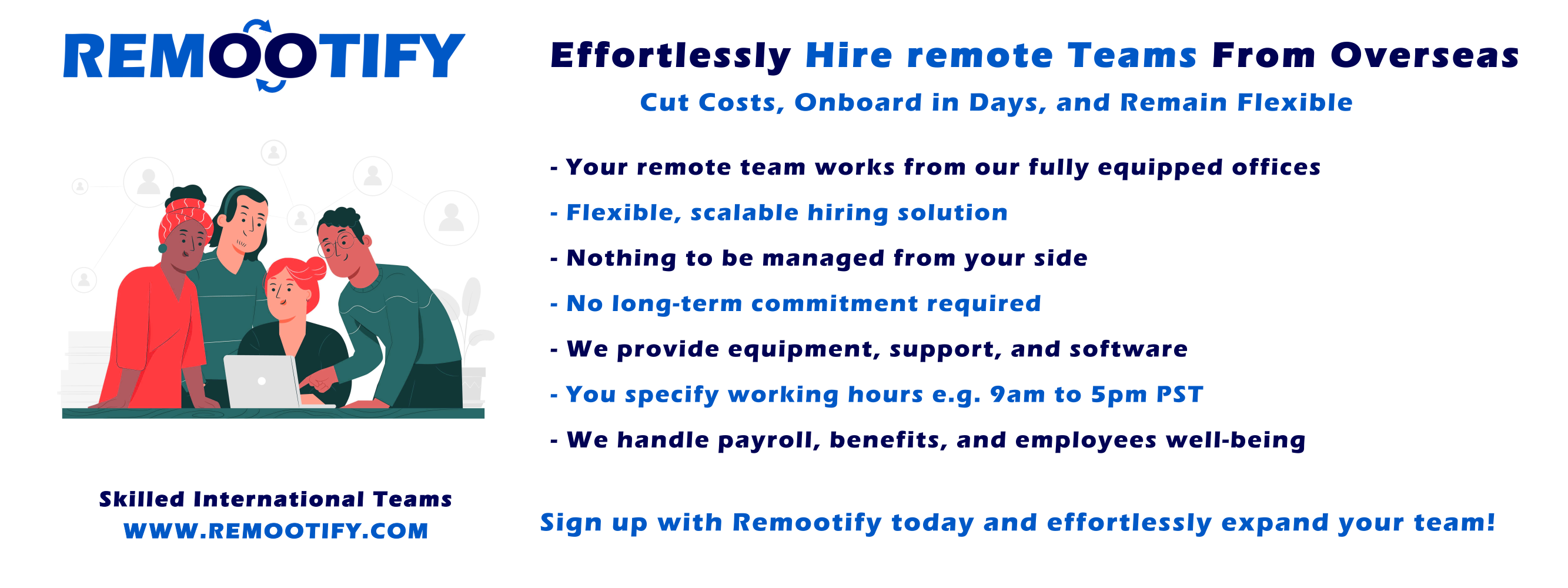Start hiring YOUR REMOTE TEAM, Today!
Enter your information below to start a discussion with one of our team members!

Within the ever-evolving domain of modern payroll management, a digital revolution is underway, with credit card payroll emerging as a key innovation.
This article delves into the convenience and benefits of using credit cards for payroll, all while unraveling the concept of shadow payroll.
We’ll explore the options available for credit card-based payroll payments and navigate the changing landscape of payroll management in today’s digital era.
Key Takeaways
- Credit card payroll offers convenience, efficiency, and enhanced security.
- It simplifies record-keeping and often includes rewards programs.
- Consider transaction fees and responsible credit card use.
- Payment options include banks, payroll services, and in-house systems.
- Shadow payroll manages tax obligations for multinational employees.
- It ensures compliance with local and home country tax laws.
- Challenges include navigating different tax systems and exchange rates.
- It differs from regular payroll, focusing on international tax and compliance.
- Benefits include reduced tax risks and precise international compensation management.
The Benefits of Paying Payroll with Credit Cards
Convenience with Credit Card Payroll
- Simplified Payment Process: Credit card payroll eliminates the need for physical checks or bank transfers, offering a hassle-free payment experience for both employers and employees.
- Instant Accessibility: With credit card payroll, employees can access their salaries instantly, enhancing financial convenience.
Efficient Record-Keeping with Credit Card Payroll
- Digital Transaction Records: Credit card payroll generates digital transaction records, streamlining record-keeping and reducing paperwork.
- Integration with Accounting Software: Credit card payroll systems often integrate seamlessly with accounting software, simplifying financial management and reporting.
Maximizing Benefits: Cashback and Rewards with Credit Card Payroll
- Earn Cashback Rewards: Credit card payroll can help companies earn cashback rewards on payroll expenses, adding an extra financial benefit.
- Employee Incentives: Utilizing rewards from credit card payroll can motivate employees and enhance overall job satisfaction.
Enhanced Security with Credit Card Payroll
- Secure Transactions: Credit card payroll transactions are processed through secure and encrypted channels, minimizing security risks.
- Fraud Protection: Credit card payroll offers advanced fraud detection and liability protection, safeguarding against fraudulent activities.
Can I Pay payroll with a Credit Card?
Financial Institutions and Credit Card Providers
- Major Banks and Their Offerings
- Many major banks offer business credit card solutions that can be used for payroll payments.
- These credit cards may come with varying rewards, credit limits, and fees, so it’s essential to compare the options available.
- Fintech Companies and Their Payroll Solutions
- Fintech (financial technology) companies often provide innovative solutions for payroll processing.
- They may offer dedicated business credit cards or integrate payroll with existing credit card services for ease of use.
Payroll Service Providers
- Integrations with Popular Payroll Platforms
- Payroll service providers offer integrations with various credit card payment gateways to streamline the payment process.
- These integrations ensure that your payroll data seamlessly connects with your credit card accounts, reducing manual data entry and the risk of errors.
- Compatibility with popular payroll platforms like QuickBooks, Gusto, or ADP is essential, as it simplifies the integration process.
- Features and Considerations When Choosing a Provider
- Security: Ensure that the payroll service provider has robust security measures in place to protect sensitive employee data and payment information. Look for industry-standard encryption and compliance with data protection regulations.
- Cost: Evaluate the cost structure of the provider, including any subscription fees, transaction charges, or additional costs for premium features. Compare these costs to the potential benefits and savings.
- User-Friendliness: Consider the user interface and ease of use of the provider’s platform. A user-friendly system can save time and reduce the learning curve for your HR and finance teams.
- Customer Support: Reliable customer support is crucial in case you encounter issues or have questions about the service. Check if the provider offers timely and responsive support through various channels.
- Additional Features: Some payroll service providers offer extra features, such as expense tracking, employee spending controls, and detailed reporting. Evaluate whether these features align with your business needs.
- Scalability: Ensure that the provider’s services can accommodate your business’s growth. Scalability is vital if you plan to expand your workforce or increase payroll complexity.
In-House Payroll Processing
- Setting Up a System for Credit Card Payments
- To implement credit card payments for payroll in-house, you need to establish a systematic workflow.
- This typically involves creating a dedicated business bank account for payroll funds and obtaining a business credit card for payments. Ensure that the credit card has an adequate limit to cover payroll expenses.
- Develop a secure process for authorizing and executing payments. Implement multi-level approvals to prevent unauthorized transactions and ensure that the payment process complies with financial regulations.
- Establish clear documentation and record-keeping procedures to maintain accurate payroll records and track credit card transactions.
- Challenges and Advantages of In-House Solutions
- Challenges
- Administrative Workload: In-house payroll processing involves additional administrative tasks, including tax calculations, compliance with labor laws, and record-keeping. This can be time-consuming and complex.
- Risk Management: Managing sensitive employee data and ensuring payment security are your responsibilities. You must have robust security measures in place to protect against data breaches or fraud.
- Limited Scalability: In-house solutions may have limitations when it comes to handling a growing workforce or complex payroll scenarios. Expanding the system may require additional resources and technology investments.
- Challenges
Ultimately, the choice between using a payroll service provider or managing payroll in-house depends on your business’s size, resources, and specific needs.
Consider the advantages and challenges of each approach to determine which aligns best with your long-term payroll management strategy.
Additionally, consult with financial and HR professionals to make an informed decision.
Navigating the Legal and Tax Aspects
A. Regulatory Compliance
- Laws and Regulations Governing Payroll
- Federal and State Labor Laws: Compliance with minimum wage, overtime, and working hour regulations.
- Employment Taxes: Proper withholding and reporting of income and payroll taxes.
- Employee Classification: Ensuring accurate classification of employees as exempt or non-exempt.
- Recordkeeping: Maintaining records of hours worked, wages, and employment contracts.
- Compliance with Credit Card Payment Regulations
- Payment Card Industry Data Security Standard (PCI DSS): Safeguarding customer payment data through compliance with PCI DSS standards.
- Card Network Rules: Adherence to rules set by credit card companies like Visa, Mastercard, and American Express.
- Consumer Protection Laws: Compliance with laws protecting consumers from unauthorized credit card charges and fraud.
B. Tax Implications
- Reporting Requirements for Credit Card Payments
- IRS Reporting: Submitting accurate 1099-K forms for businesses with credit card sales over a certain threshold.
- Sales Tax Reporting: Ensuring proper collection and remittance of sales tax on credit card transactions, in accordance with state and local laws.
- Tax Year-End Reporting: Preparing year-end financial statements that accurately reflect credit card transaction income for tax purposes.
- Tax Deductions and Implications for Employees
- Employee Expense Deductions: Determining which credit card expenses are deductible for tax purposes, such as business meals or travel expenses.
- Employee Tax Reporting: Providing employees with accurate W-2 forms that reflect any credit card reimbursements or benefits.
- Withholding and FICA: Properly withholding and reporting income tax, Social Security, and Medicare taxes related to credit card benefits for employees.
Understanding Shadow Payroll
Defining Shadow Payroll
- Shadow payroll refers to a payroll system maintained by multinational companies to track and report the income and taxes of employees working in foreign countries.
- It is essentially a parallel or “shadow” accounting system that runs alongside the main payroll to ensure compliance with local tax regulations.
When is Shadow Payroll Necessary?
- Shadow payroll is necessary when a company has employees working in foreign countries.
- It becomes crucial when there are tax obligations in both the home country (where the company is headquartered) and the host country (where the employee is working).
- It helps in calculating and withholding taxes accurately while avoiding potential legal and financial risks.
Steps to Set Up and Manage Shadow Payroll
- Identify Tax Jurisdictions
- Determine the countries where employees are working and where tax obligations exist.
- Understand Local Tax Laws
- Familiarize yourself with the tax laws, rates, and regulations in each country where you have employees.
- Data Gathering
- Collect employee information, including compensation details and work location.
- Calculate Taxes
- Calculate the tax liability for each employee based on their income, deductions, and tax treaties between countries.
- Reporting and Compliance
- Prepare and submit accurate payroll reports to both local tax authorities and the home country’s tax authorities.
- Payment of Taxes
- Ensure that taxes are withheld and paid in a timely manner to avoid penalties.
- Integration with Main Payroll
- Integrate shadow payroll processes with the main payroll system to streamline reporting and data management.
- Regular Updates
- Stay updated with changes in tax laws and regulations in all relevant countries and adjust the shadow payroll accordingly.
Mitigating Common Challenges
- Data Accuracy
- Verify and maintain accurate employee data, as errors can lead to compliance issues.
- Compliance Risks
- Stay vigilant about changing tax laws and regulations to avoid non-compliance penalties.
- Integration Challenges
- Ensure seamless integration between the shadow payroll and the main payroll system to prevent discrepancies.
- Reporting and Documentation
- Maintain comprehensive records and documentation to support tax filings and audits.
- Communication
- Establish clear communication channels with employees regarding tax implications and deductions.
- Technology Solutions
- Consider using payroll software or outsourcing to specialized providers to streamline shadow payroll processes.
- Internal Training
- Train HR and finance teams on shadow payroll procedures and global tax compliance.
- Legal Counsel
- Seek legal counsel or tax experts to navigate complex tax issues and ensure compliance.
- Auditing
- Conduct periodic audits to identify and rectify any discrepancies or issues in the shadow payroll system.
By following these steps and addressing common challenges, companies can effectively manage their shadow payroll, ensuring compliance with tax laws in multiple jurisdictions.
Tips for Successful Payroll Management
A. Best practices for utilizing credit cards in payroll
- Ensure the security of credit card information: Implement strong security measures to protect sensitive credit card data from unauthorized access.
- Set clear policies: Establish company policies and guidelines for using credit cards in payroll to prevent misuse.
- Monitor transactions: Regularly review credit card statements and transactions to identify any irregularities or discrepancies.
- Educate employees: Train employees on the responsible use of company credit cards, emphasizing the importance of compliance with policies.
B. Ensuring accurate and timely payments
- Automate payroll processes: Implement payroll software and systems to streamline calculations and reduce errors.
- Double-check data: Verify all payroll data, including hours worked, deductions, and benefits, to ensure accuracy.
- Set a consistent schedule: Establish a clear payroll processing schedule to ensure payments are made on time.
- Maintain records: Keep detailed records of all payroll transactions for auditing purposes.
C. Staying compliant with tax and labor laws
- Stay informed: Continuously monitor changes in tax and labor laws at the local, state, and federal levels.
- Consult experts: Seek legal and tax advice from professionals or consult with a payroll service provider to ensure compliance.
- Regular audits: Conduct periodic audits of payroll processes to identify and rectify any compliance issues.
- Employee classification: Properly classify employees as exempt or non-exempt to comply with overtime regulations.
D. Strategies to optimize shadow payroll processes
- Centralize payroll data: Consolidate payroll data for expatriate employees to simplify the shadow payroll process.
- Coordinate with tax authorities: Communicate with tax authorities in both home and host countries to ensure accurate reporting.
- Leverage technology: Utilize payroll software and tools that can handle complex global payroll calculations and reporting.
- Train HR and finance teams: Ensure that teams responsible for shadow payroll processes are well-trained and understand the intricacies of international payroll.
—
Conclusion
In summary, credit card payroll presents a modern and efficient solution for managing employee compensation.
Its benefits, including convenience and enhanced security, make it a compelling option for businesses.
Simultaneously, grasping the concept of shadow payroll is essential for global organizations to maintain compliance across borders.
As we progress, the fusion of credit cards and payroll management promises to redefine how we handle compensation, offering convenience and efficiency for employers and employees alike.
—
FAQs
What is credit card payroll?
Credit card payroll refers to the process of paying employees using credit cards instead of traditional methods like checks or direct deposit.
Why would a business choose to use credit card payroll?
Businesses may opt for credit card payroll to streamline payment processes, enjoy cashback rewards, and provide convenience to employees.
What is shadow payroll?
Shadow payroll is a process used by multinational companies to calculate and report the tax and social security obligations for employees working in foreign countries while maintaining compliance with both local and home country tax laws.
How does shadow payroll differ from regular payroll?
Shadow payroll focuses on taxes and compliance for international employees, while regular payroll manages compensation and benefits within a single country.
What are the benefits of shadow payroll for multinational businesses?
Benefits include ensuring compliance, reducing tax risks, and providing accurate compensation to international employees while maintaining transparency.





